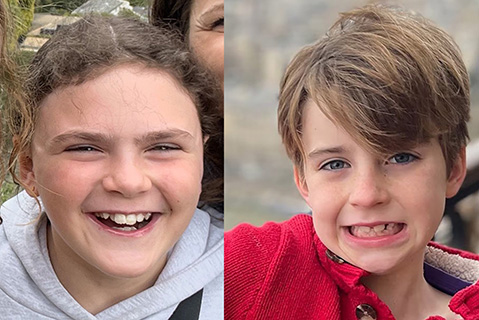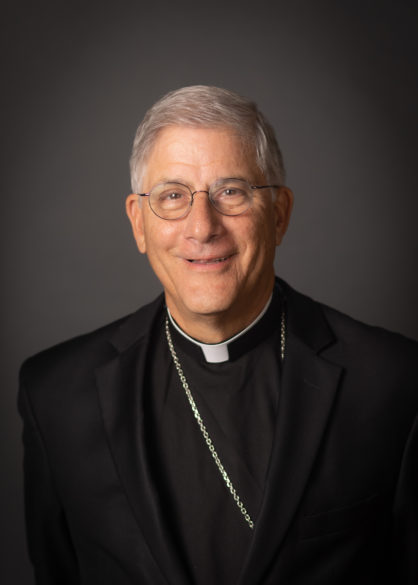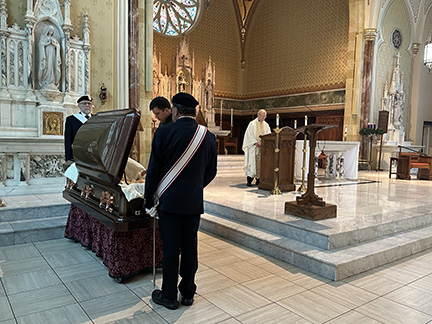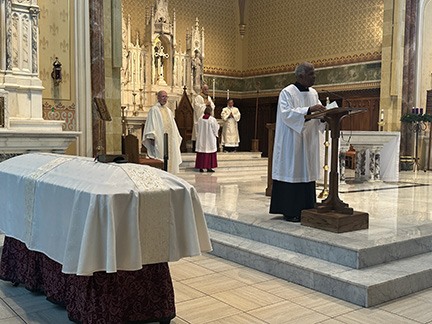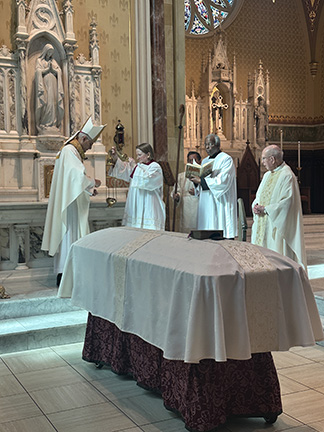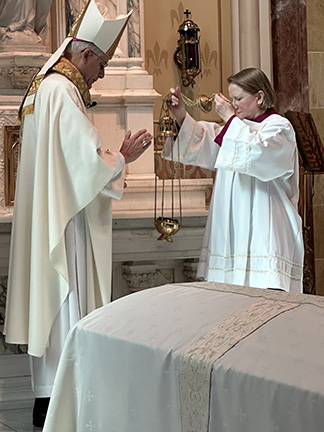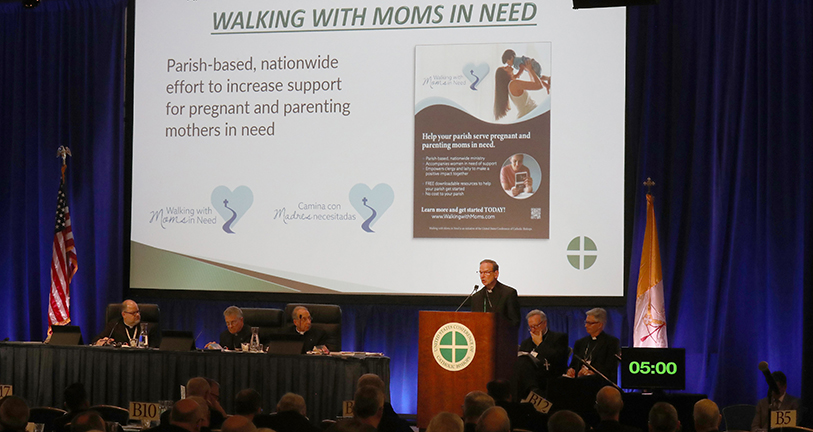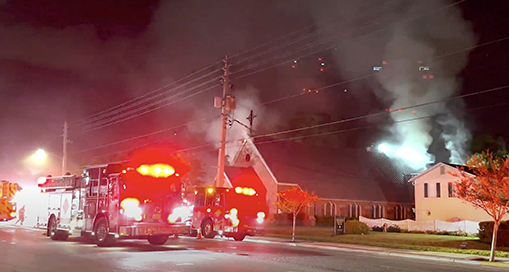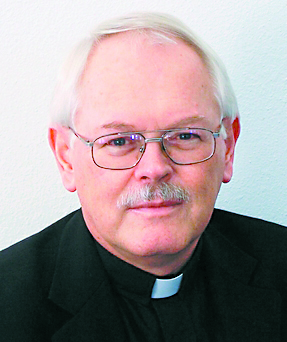Por Joanna King
JACKSON – La Diócesis de Jackson está marcando una transición significativa en la educación católica, ya que la líder de larga data Karla Luke se jubila y Joni House asume el cargo de nueva directora ejecutiva de Educación Católica.
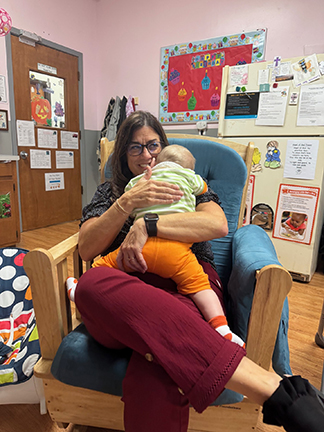
Luke, que se jubiló a finales de septiembre tras más de 33 años en la educación católica, ha sido una líder constante y llena de fe para las escuelas diocesanas. Durante su mandato, contribuyó a que la diócesis obtuviera reconocimiento nacional cuando sus escuelas católicas fueron nombradas «Sistema Escolar de Distinción» por Cognia, una de las cuatro únicas instituciones católicas de todo el mundo —y la única diócesis católica— en recibir este honor.
«En los últimos 33 años, el logro más reciente de que Cognia reconociera a la Diócesis de Jackson como un Sistema de Distinción ha sido una experiencia abrumadora y poco común», dijo Luke. «Sin embargo, en el ámbito cotidiano del trabajo, lo que más me enorgullece es poder interactuar con tantos estudiantes, maestros y directores. Es muy gratificante saber que has sido una pequeña parte de la vida de un estudiante durante un breve periodo de tiempo».
El obispo Joseph Kopacz elogió el liderazgo y la dedicación de Luke, y destacó cómo guió a las escuelas a través de los desafíos de la pandemia de COVID-19 y hacia un período de crecimiento. «Karla ha dedicado su vida profesional a la difusión del Evangelio y las enseñanzas de la Iglesia a través de la educación católica», dijo. «Su liderazgo servicial culminó con la calificación excepcional de Cognia para el Sistema de Escuelas Católicas de la Diócesis de Jackson. Que el Señor la bendiga en su jubilación con su familia, sus amigos y en todas sus nuevas aventuras».
House, antigua directora de la Escuela Católica Annunciation en Columbus, comenzó su nuevo cargo a principios de septiembre. Fue elegida tras una búsqueda nacional de cinco meses. Con más de 14 años de experiencia como administradora de escuelas católicas y varios años como especialista en acreditación de Cognia, aporta tanto liderazgo práctico como una visión global.
«Me sentí llamada a este cargo porque me permite servir a nuestras escuelas y comunidades de una nueva manera», dijo House. «Ser directora me enseñó los retos y las alegrías diarios del liderazgo escolar, y mi trabajo en Cognia me mostró lo poderosa que puede ser la mejora continua. Juntas, esas experiencias me ayudan a aportar tanto una comprensión práctica como una visión global a este cargo».
House dijo que ve oportunidades emocionantes para las escuelas católicas de la diócesis: dar la bienvenida a más familias, fortalecer los programas académicos con nuevos enfoques y profundizar la vida de fe de los estudiantes para que salgan preparados para servir a los demás. Al mismo tiempo, reconoció retos como la matriculación, la sostenibilidad financiera y la retención de maestros, que espera abordar mediante la colaboración y sólidas asociaciones con las parroquias.
También expresó su gratitud por el trabajo realizado por Luke. «Quiero continuar con el trabajo que ella comenzó, al tiempo que aprovecho las nuevas oportunidades que se presentan para nuestras escuelas, familias y comunidades», dijo House. «El reconocimiento como Sistema Escolar de Distinción Cognia reafirma el arduo trabajo de nuestras escuelas y nos desafía a mantener y hacer crecer esa cultura de mejora continua para que la educación católica en nuestra diócesis siga siendo fuerte y vibrante».
El obispo Kopacz dijo que confía en su liderazgo. «Tiene una fe vibrante en el Señor Jesús y está comprometida con la Gran Comisión de enseñar a las naciones y formar discípulos», dijo. «Su pasión por los niños y sus familias, y su apoyo profesional a los educadores y al personal la han preparado bien para dirigir nuestro sistema escolar católico hacia el futuro. Espero con interés su liderazgo en el futuro».
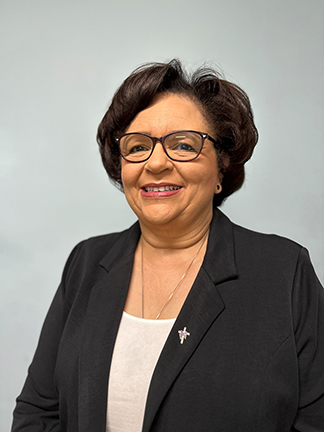
Luke, en su carta de jubilación, expresó su profunda gratitud al obispo Kopacz, a sus colegas de la cancillería, a los párrocos y, especialmente, a los administradores y maestros que forman «el corazón y el alma» de las escuelas diocesanas. «Aunque mi etapa en este cargo llega a su fin, mi compromiso con la educación católica sigue siendo firme», escribió.
Para Luke, la alegría siempre ha estado en las relaciones que ha construido a lo largo del camino. Para House, la emoción está en las nuevas oportunidades que le esperan. Juntas, sus historias reflejan la misión central de la educación católica en la Diócesis de Jackson: formar a los estudiantes en la fe, el conocimiento y el servicio.

